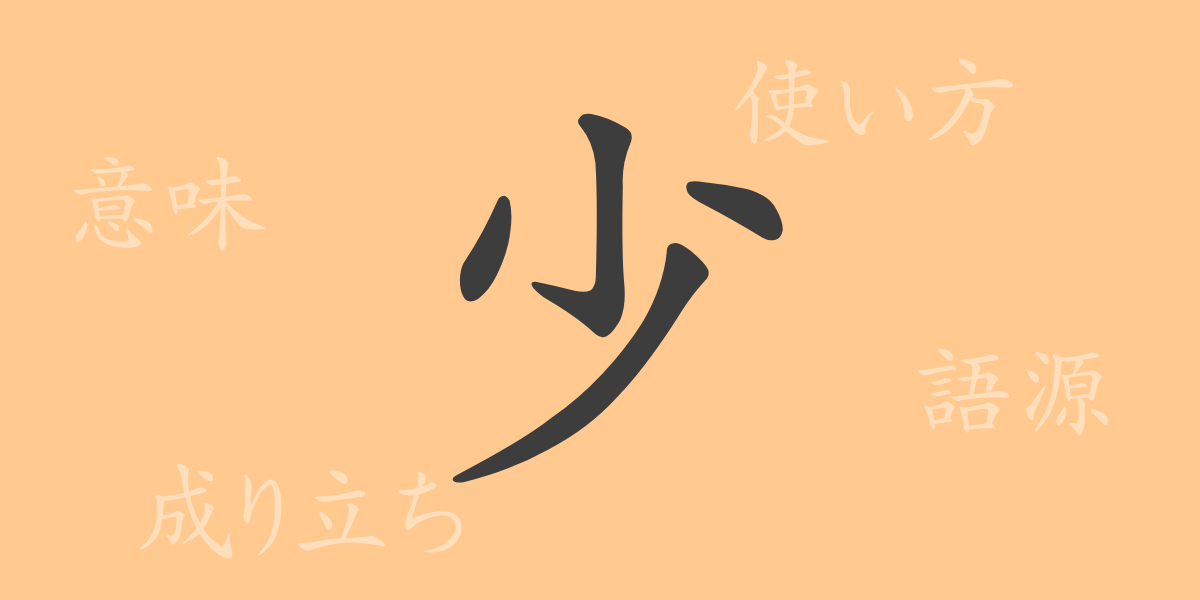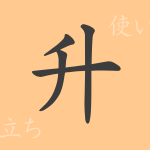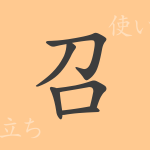The beauty of the Japanese language is reflected in its complex and delicate writing system. Kanji sits at the heart of this system, with each character holding deep meanings and historical significance. This article shines a spotlight on one of the common Kanji, ‘少’ (すく.ない, すこ.し, しょう), exploring its origins, contemporary usage, and more. We hope to bring you closer to the world of the Kanji ‘少’ through this exploration.
Origins of 少 (すく.ない, すこ.し, しょう)
The Kanji ‘少’ originates from ancient China and is derived from pictographs. Initially, it depicted a simplified human form to signify ‘fewness of people’, and over time, it evolved to express a small quantity. As time passed, ‘少’ came to indicate not only a small number or amount but also a small degree or scale.
Meanings and Usage of 少 (すく.ない, すこ.し, しょう)
The Kanji ‘少’ fundamentally denotes a small quantity or degree. It is used as an adjective or adverb, appearing in everyday conversation in forms like ‘少ない’ (few) and ‘少し’ (a little). It is also found in expressions that imply negation, such as ‘少なくとも’ (at least) or ‘少なからず’ (not a few), to guarantee the minimum or indicate an impact greater than expected.
Pronunciation, Stroke Count, and Radical of 少 (すく.ない, すこ.し, しょう)
The Kanji ‘少’ has several readings, which vary depending on the context.
- Reading: The On’yomi (Sino-Japanese reading) is ‘しょう’, and the Kun’yomi (native Japanese reading) are ‘すく.ない’ and ‘すこ.し’.
- Stroke Count: ‘少’ consists of 4 strokes.
- Radical: The radical is ‘小’, but the Kanji itself also functions as a radical.
Phrases, Idioms, and Proverbs Using 少 (すく.ない, すこ.し, しょう) and Their Meanings
There are numerous idioms and proverbs that include ‘少’, reflecting a wide range of meanings. Some examples include:
- 少年老い易く学成り難し(しょうねんおいやすくがくなりがたし): It suggests that youth passes quickly, making it difficult to acquire knowledge.
- 少々お待ちください(しょうしょうおまちください): A polite expression meaning ‘please wait a moment.’
- 少数精鋭(しょうすうせいえい): Indicates a group is small in number but high in quality.
Conclusion on 少 (すく.ない, すこ.し, しょう)
The Kanji ‘少’, despite its simple form, holds rich meanings and versatile uses. Its application in the Japanese language demonstrates an ability to adjust the amount of information without omitting important details. This single character embodies the richness of Japanese expression and plays a significant role in our linguistic repertoire.

























